NIL
Without Action, NIL Risks Entrenching Inequities (opinion)



When the National Collegiate Athletic Association authorized students to monetize their name, image and likeness (NIL) rights in 2021, the decision was framed as a transformative disruption of amateurism, a chance to democratize financial opportunities across all college athletes, regardless of gender, sport or institutional affiliation. Advocates envisioned a marketplace where visibility, entrepreneurship and merit could eclipse systemic bias.
Four years later, the results are starkly disproportionate. Despite NIL’s promise of inclusion, early outcomes reveal a new iteration of entrenched hierarchies. Football and men’s basketball athletes capture the overwhelming majority of NIL earnings, while women athletes and athletes on nonrevenue teams fight for a marginal share of the market. Without deliberate structural reform, NIL threatens to entrench long-standing inequities under a modern guise.
NIL’s Uneven Impact
Industry data shows that nearly 80 percent of NIL dollars flow to male athletes, particularly in football and men’s basketball. Female athletes, even those with notable athletic success or strong social media presences, remain vastly underrepresented in the NIL economy.
Most Popular
Structural factors reinforce this disparity. Booster-backed NIL collectives, which pool financial resources to support athletes, heavily favor men’s sports. Corporate sponsorships and media deals mirror historical inequities, channeling investment into male-dominated programs while relegating women’s teams to the periphery. Visibility begets value, and in a marketplace where women’s sports still struggle for equitable media exposure, the playing field remains far from level.
NIL was not designed to correct these underlying market forces, but it now magnifies them. Without intervention, it risks solidifying a two-tiered economy in college athletics.
Structural Challenges on the Horizon
Experts in college athletics governance warn that emerging legal frameworks will further complicate the NIL landscape. The House v. NCAA settlement is slated for implementation on July 1. It will allow universities to directly share revenue with student athletes, capped at $20.5 million annually per institution.
Under this model, institutions must balance new forms of direct compensation with Title IX obligations and financial sustainability. Yet as legal scholars note, mechanisms for ensuring gender equity in relation to institutional NIL payments remain vague. Enforcement is expected to focus on egregious violations, not on proactively monitoring systemic disparities.
It is worth noting that these reforms are built around the infrastructure of the Power Four conferences, former Power Five members and high-revenue sports programs, leaving smaller institutions to bear the consequences. A key critique raised during policy discussions is that the NCAA is funding legal defenses and settlements (such as House v. NCAA) largely stemming from Power Five football, despite receiving no revenue from the College Football Playoff, which is independently operated by the conferences. The NCAA’s primary income source is March Madness, yet it shoulders the regulatory and legal burdens tied to football governance.
The settlement also introduces roster limits as a cost-control and Title IX compliance strategy. While reducing football roster sizes may create financial savings, roster limits risk unintended consequences: shrinking athletic opportunities and destabilizing programs that have historically expanded access for women. Institutions must tread carefully to avoid worsening inequities under the banner of financial reform. Fewer athletes also mean fewer enrolled students paying tuition and contributing to campus life, subtler but significant consequences for institutional sustainability.
Additionally, with federal guidance on NIL payments and Title IX in flux since the change in presidential administrations in January, it remains unclear how Title IX should apply to direct athlete compensation and NIL structures. This regulatory uncertainty is unfolding alongside a broader retrenchment in higher education equity efforts. Diversity, equity and inclusion initiatives have faced mounting political and legal challenges, with many institutions scaling back public-facing commitments to equity under state pressure or due to administrative caution.
For instance, states like Florida, Oklahoma and Texas have enacted laws and policies that dismantle DEI offices and restrict related programming at public universities. These states collectively host more than a dozen Power Four institutions, including prominent programs in the SEC and Big 12 conferences. The elimination of DEI infrastructure in these states not only limits institutional capacity to address equity in NIL implementation but also exacerbates compliance challenges under Title IX. In this climate, even well-intentioned NIL reforms risk deprioritizing gender equity, not only at institutions facing state legislative pressures, but across the broader higher education landscape, where structural limitations and regulatory ambiguity increasingly constrain equity-focused work.
Editors’ Picks
Without a coherent federal framework, institutions are left to interpret compliance on their own, often inconsistently and without the tools to embed gender equity into NIL design. As regulatory momentum builds, there is a real risk that top-down reforms will entrench existing hierarchies rather than dismantle them. Legal pressure is mounting as well: Cases against the NCAA are increasingly addressing more nuanced areas of NIL, including media rights, retroactive compensation and the classification of athletes as employees. These developments signal that without clear, equity-centered policy, institutions may soon find themselves not only out of compliance, but in court.
Building Equity by Design
Higher education must recognize that NIL is not just a financial or athletic issue; it is a fundamental equity issue. Institutions cannot afford to replicate old hierarchies under a new system.
Concrete steps forward include:
- Building equitable promotional strategies: Ensure comparable visibility across men’s and women’s sports by investing in joint marketing campaigns, content creation resources and equitable social media promotion, not just traditional media coverage.
- Implementing comprehensive NIL education programs: Offer workshops that directly address gender-based disparities in financial literacy, contract negotiation, branding strategies and legal rights, for both student athletes and coaching staffs.
- Strengthening institutional NIL infrastructure: Equip athletic departments with trained NIL administrators, general managers and compliance officers to support equitable deal facilitation and roster management across all sports, not just revenue teams.
- Structuring donor engagement more inclusively: Actively encourage booster support for women’s and Olympic sports by creating collective fundraising goals, incentive matches and branding opportunities that spotlight underrepresented teams.
- Embedding Title IX compliance at every stage: Require that institutional NIL deals undergo equity review for gender representation before approval and align NIL policies with broader Title IX audits to ensure systemic, not incidental, compliance.
- Expanding shared governance around NIL oversight: Engage faculty senates, equity officers and trustees in the design and review of NIL policies to ensure they align with broader institutional commitments to Title IX and educational access.
NIL offers unprecedented opportunities for student-athletes, but opportunity alone does not guarantee equity. Without intentional correction, the marketplace will reflect and reinforce historical biases. Colleges and universities must commit not merely to participating in the NIL era, but to shaping it in a way that honors the values of inclusion, fairness and educational purpose.
NIL
Major college football program joins sweepstakes for No. 1 transfer portal player
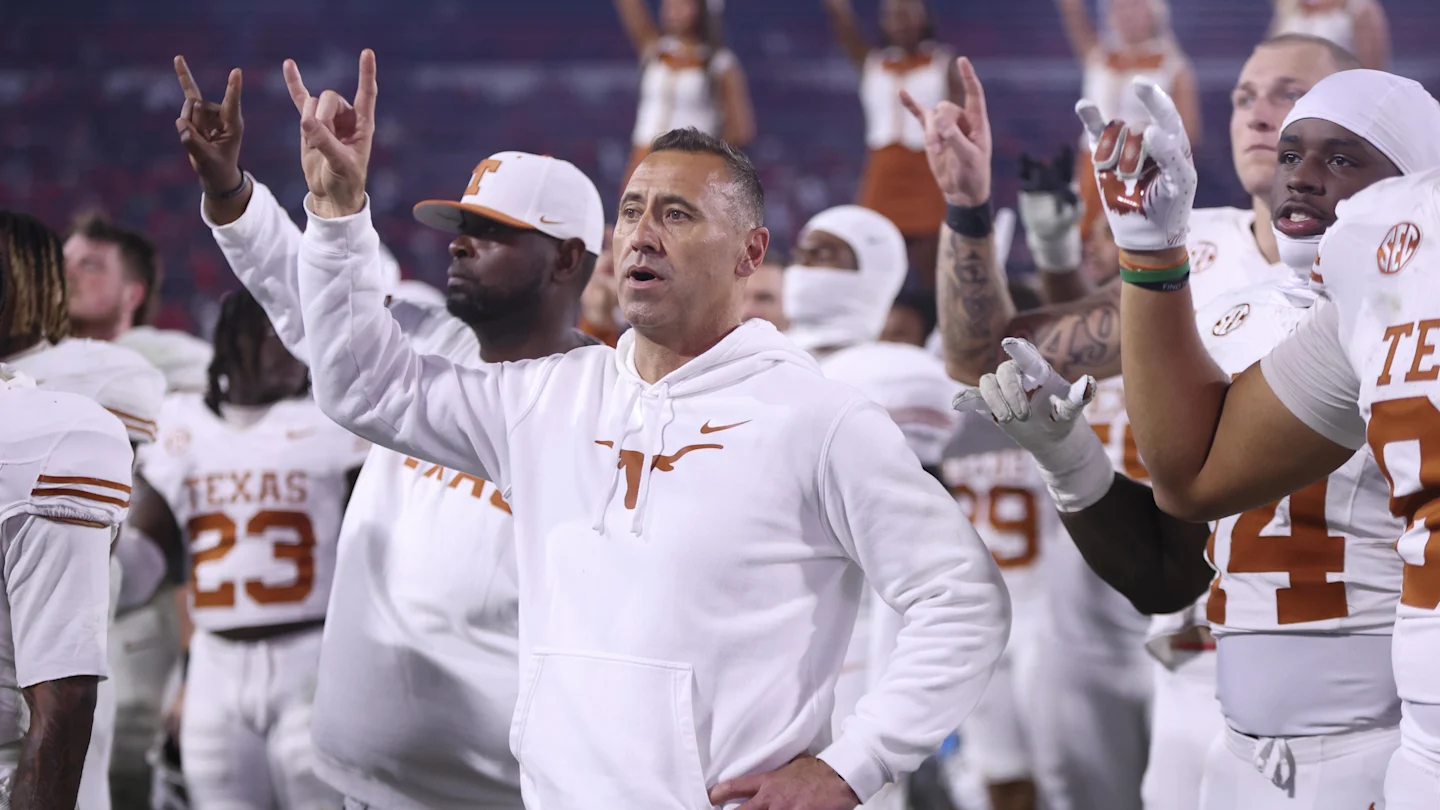
The NCAA transfer portal officially opens on Friday for all college football players searching for new schools to compete for in 2026. It will remain open for the next two weeks.
In the weeks following the conclusion of the 2025 regular season, thousands of college football players made the decision to play for another program next season. While quarterbacks have been a more dominant topic of conversation with the portal, there are plenty of other significant offensive skill players on the move.
One marquee name in the 2026 portal cycle is former Auburn wide receiver Cam Coleman. He will enter the portal with two seasons of eligibility remaining at his second school.
Hugh Freeze recruited Coleman to Auburn as one of the highest-rated wide receiver prospects in the 2024 class. He is projected by all recruiting services as the No. 1 overall recruit in the NCAA transfer portal for the 2026 offseason.
Coleman appeared in 10 of Auburn’s 12 games in 2024. He caught 37 passes for 598 yards and eight touchdowns his freshman season. He was named to the All-SEC Freshman Team that season.
Auburn featured Coleman in every game of the 2025 season. He grabbed 56 receptions for a team-high 708 yards and five touchdowns.

With such high prospects, Coleman is expected to attract attention from major college football programs across the country. The offers for Coleman are expected to hover around $2 million from any potential buyers.
One school that has worked its way into the mix to land Coleman in the 2026 offseason is Texas. Mike Golic Jr. mentioned the idea of the Longhorns jockeying for Coleman on a recent edition of Bleacher Report’s “College Football Show.”
“Steve Sarkisian is great at getting wide receivers the touches they want to look good for the NFL. Arch Manning, after being left for dead after the early portion of the season, looked like one of the best quarterbacks in college football the back half of the year,” Golic said. “I think you combine the quarterback with the offensive playcaller, I think you have a good setup there.”
As Golic mentioned, Sarkisian has a strong track record with wide receivers as an offensive mind. DeVonta Smith won a Heisman Trophy at Alabama with Sarkisian as the Crimson Tide’s offensive coordinator. That offense featured another future NFL talent at wide receiver in Jaylen Waddle.
Wide receivers have gone to the NFL throughout Sarkisian’s tenure at Texas. AD Mitchell, Xavier Worthy, Matthew Golden and Isaiah Bond are among the Longhorns’ wide receivers who have reached NFL rosters in Sarkisian’s tenure in Austin.
NIL
Nick Saban declares Miami ‘the real deal’ after College Football Playoff win over Ohio State in Cotton Bowl

Although it entered the game as the biggest underdog of the College Football Quarterfinal round, No. 10 Miami shocked the world and downed defending National Champion No. 2 Ohio State 24-14 in Wednesday night’s Goodyear Cotton Bowl.
The Hurricanes are now two wins away from their first National Championship since 2001. They will face the winner of No. 3 Georgia/No. 6 Ole Miss in the Vrbo Fiesta Bowl on Jan. 8, with a spot in the national title game on the line.
Following Wednesday night’s big win for ‘The U,’ legendary head coach Nick Saban labeled Miami as ‘the real deal’ heading into the College Football Playoff Semifinals. Clearly, Saban is all-in on his former assistant, Mario Cristobal.
“The thing that impressed me the most was how relentless Miami competes in a game,” Saban said on Thursday morning’s edition of ‘College GameDay‘. “When Ohio State came out and answered the bell in the second half, Miami just kept playing. They drove through the smoke and made the plays they had to make when they had to make them. A couple of third down conversions on that last drive, which was critical.
“These guys are the real deal, and they’re peaking at the right time. They’re playing their best ball of the season right now, which is attributed to the coaching staff and players’ commitment to a standard, which they’re playing to.”
No. 10 Miami never trailed in 24-14 win over No. 2 Ohio State
Miami never trailed in the game, as it jumped out to a 7-0 lead early in the second quarter thanks to a nine-yard touchdown pass from quarterback Carson Beck to star running back Mark Fletcher Jr. Ohio State drove the length of the field and looked to tie the game, but Buckeye quarterback Julian Sayin was picked off by Miami DB Keionte Scott. Scott returned the interception 72 yards for a pick-six, propelling the ‘Canes to a 14-0 advantage.
A one-yard touchdown run from Ohio State running back Bo Jackson cut into the deficit, but a Miami field goal drew it back out to 17-7. It appeared the Buckeyes had all the momentum following a Jeremiah Smith 14-yard receiving touchdown, but a CharMar Brown five-yard touchdown run with just under a minute remaining dashed all hope of an Ohio State comeback.
“You’ve seen how we work and how we practice,” head coach Mario Cristobal said postgame. “They got tired of hearing from everybody. We’re focused on us.”
Cristobal was heavily criticized during the early years of his Miami head coaching tenure, as the Hurricanes suffered losses to programs such as Middle Tennessee State, Rutgers, and Syracuse (which practically kept them out of the 2024 CFP). He, however, has stuck it out, and has his alma mater closer to a National Championship than they’ve been in 25 years.
NIL
College football’s leading passer linked to two programs in transfer portal
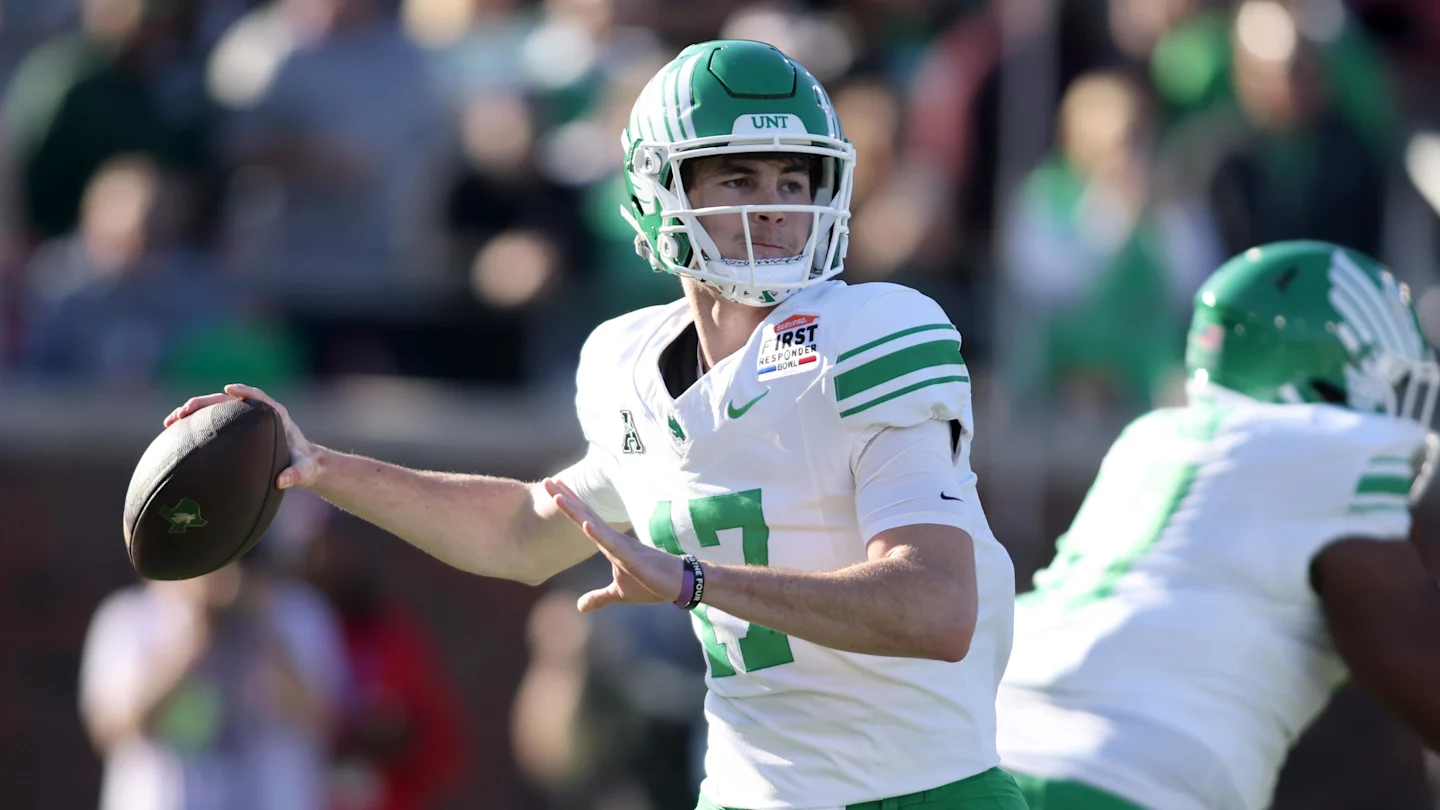
North Texas posted a school-record 12-win season in 2025 behind a high-octane offense led by redshirt freshman quarterback Drew Mestemaker, who finished the year as the nation’s leading passer.
The Mean Green advanced to the American Conference championship game, lost to College Football Playoff participant Tulane, and capped the season with a 49-47 New Mexico Bowl win over San Diego State.
North Texas led FBS in scoring (45.1 points per game) and total offense (512.4 yards per game), operating one of the country’s most prolific attacks under head coach Eric Morris.
However, shortly after the Mean Green’s season came to an end, Mestemaker announced he will enter the NCAA transfer portal when it opens, placing one of college football’s most productive quarterbacks on the market.
On Wednesday, On3’s J.D. PicKell specifically named Oklahoma State, where Mestemaker’s former head coach at North Texas, Eric Morris, is now the head coach, and Miami, whose desire for a passer who can stretch the field aligns with Mestemaker’s skill set.
“If I’m making a prediction, I would tell you Drew Mestemaker is following his head coach, Eric Morris, from North Texas to Oklahoma State. That’s my prediction,” PicKell said. “That’s not this segment. This segment is where’s the best fit for Drew Mestemaker. I think Miami’s the best fit for Mestemaker.”
“He fits exactly who I believe Miami wants to be offensively. Like, Miami and Shannon Dawson, what do they want to do? Spin the freaking rock, push the ball down the field, have vertical shot plays, score points, spread you out.”
“Yes, they still want to run the football, they still want to stay true to the Mario Cristobal genes of being an offensive linemen-driven program, but at the same time, I think they want to air it out and score a lot of points in the process.”
“Think more of what you saw from Cam Ward his year there than what you’ve seen this year with Carson Beck,” PicKell added.

Mestemaker, a 6-4, 211-lb redshirt freshman and former walk-on, finished 2025 as the FBS passing leader with 4,379 passing yards, 34 passing touchdowns, nine interceptions, and a 68.9% completion rate over 14 games.
He also earned first-team All-American honors, was named The American Offensive Player of the Year, and won the Burlsworth Trophy, now entering the portal with three years of eligibility remaining.
Morris was hired as Oklahoma State’s head coach following the 2025 season, and he previously coached Mestemaker while rebuilding North Texas’ offense, creating a clear path to immediate continuity in Stillwater.
Miami also makes sense stylistically, as offensive coordinator Shannon Dawson’s system emphasizes spacing, vertical shots, and tempo; traits that align with Mestemaker’s accuracy and downfield passing ability.
Mestemaker is set to enter the transfer portal when the early January window opens on Friday, at which point Power Four programs can contact him unless he applies a no-contact tag.
Read More at College Football HQ
- First-team All-Conference college football starter enters transfer portal
- All-Conference WR enters college football transfer portal after breakout season
- No. 1 college football team linked to underrated prospect in transfer portal
- College football program loses 16 starters to transfer portal
NIL
No. 1 ranked transfer portal QB expected to make $3.5 million annually
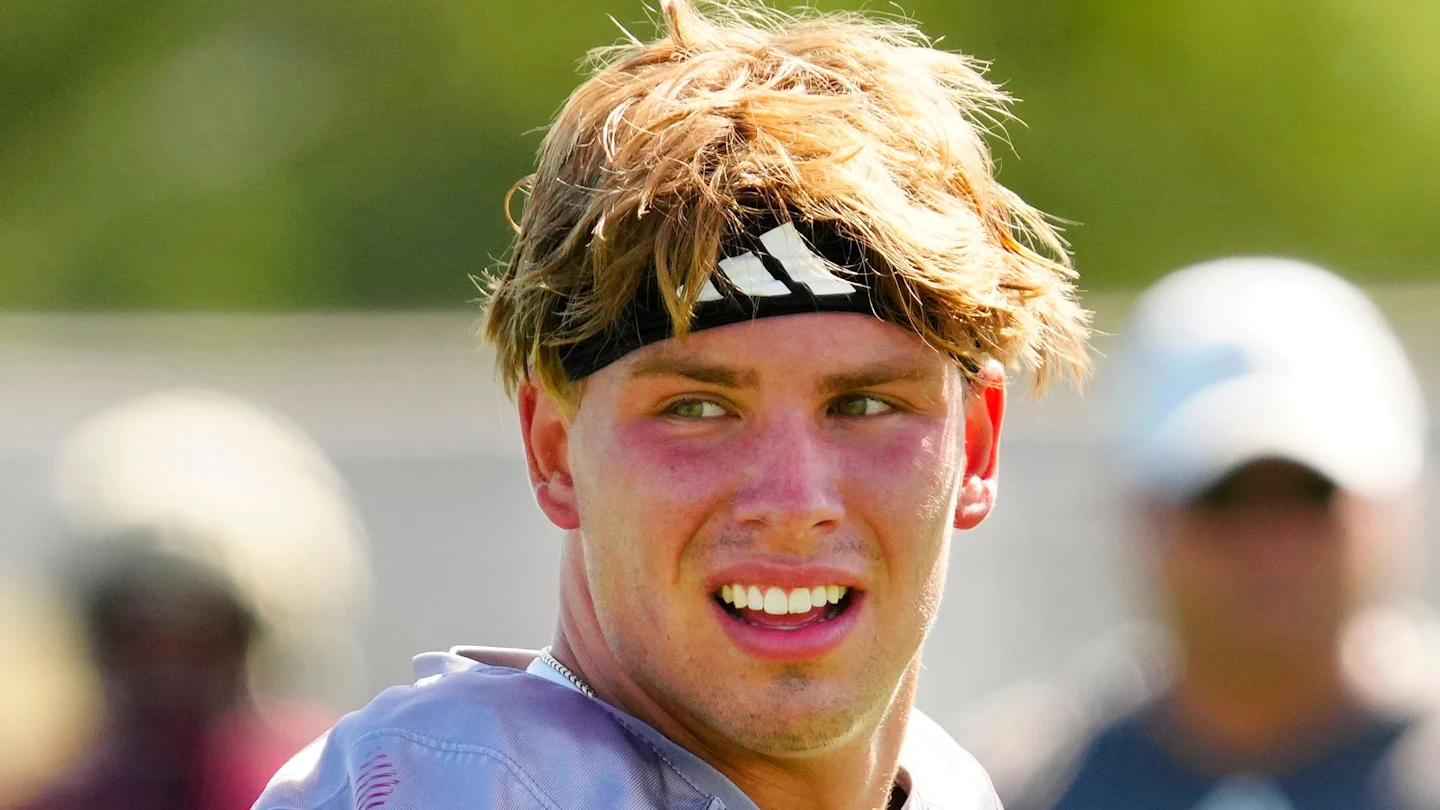
The financial landscape of college football has shifted dramatically as teams navigate the first full cycle under new revenue-sharing models. General managers and talent evaluators initially expected a spending downturn at the quarterback position due to these caps, but the market has reacted in the opposite direction.
Programs are now finding creative ways to structure contracts that exceed revenue-share limits, often using marketing deals to bridge the gap for high-profile talent.
This aggressive spending surge has established a new price tier for the sport’s most valuable position, according to CBS Sports reporting from Chris Hummer and John Talty. The top quarterbacks in the transfer portal are now expected to command annual salaries exceeding $3.5 million, a figure that mirrors the NFL salary cap allocation for starting quarterbacks relative to total roster spending.
One ACC general manager noted that just six weeks ago, such numbers seemed impossible, but schools have since found ways to combine multiple deals to meet the $4 million threshold.
A specific veteran signal-caller has emerged as the primary beneficiary of this market explosion following a standout season and a surprising entry into the portal. This player brings a proven track record, including a playoff berth and extensive experience, making him an immediate upgrade for rosters across the country. His availability has triggered a bidding war among powerhouse programs desperate to secure a proven leader who can navigate the complexities of modern college offenses.
Quarterbacks commanding larger NIL deals
Arizona State Sun Devils quarterback Sam Leavitt has officially entered the transfer portal and is expected to command a salary that reflects the new market reality.
High-end transfer quarterbacks like Leavitt, along with Brendan Sorsby from the Cincinnati Bearcats and Josh Hoover from the TCU Horned Frogs, are now valued at more than $3.5 million annually. This contradicts earlier assumptions that revenue-sharing caps would depress player wages.

General managers are discovering that the demand for quality passing requires ignoring previous budget constraints. An ACC executive explained that programs are constructing contracts that consist of up to 15 separate deals to reach the $4 million mark. This strategy allows schools to technically adhere to revenue-sharing limits while still paying market rates for top talent.
The willingness to spend such a large percentage of the cap is a matter of intense debate among front-office personnel. A Big Ten general manager questioned whether it is prudent to allocate 20 percent of a program’s resources to a single player.

The executive warned that unless a quarterback performs at an elite level, the heavy investment could prove detrimental to the overall roster construction.
Prices for mid-tier options have also seen a significant increase. Quality starters who previously cost in the high six figures are now commanding between $1.5 million and $2.5 million. Even unproven backups with high upside are requesting salaries near the $2 million mark as the market resets.
Read more on College Football HQ
NIL
No. 1 transfer portal QB clearly linked to two major college football programs

Arizona State finished the 2025 season 8–5 (6–3 Big 12) and closed with a narrow 42–39 Sun Bowl loss to Duke, capping a year that followed the program’s breakthrough 2024 run, which included an 11–3 finish and a College Football Playoff appearance.
Head coach Kenny Dillingham returned an offense built around quarterback Sam Leavitt, who appeared in just seven games before a lingering foot/leg injury required season-ending surgery on October 31, abruptly ending his second season in Tempe.
Through those seven games, he completed 145-of-239 passes (60.7%) for 1,628 passing yards, 10 TDs, and three INTs (129.2 passer rating) and added 73 rushes for 306 yards and five rushing TDs.
Leavitt originally committed to Michigan State in 2023 as a four-star prospect and the No. 21 quarterback in the 2023 class per the 247Sports Composite, spending one season with the Spartans before transferring to Arizona State ahead of the 2024 campaign.
He quickly established himself as the Sun Devils’ starter, throwing for 2,885 yards with 24 touchdowns and six interceptions during his first full season in 2024, adding 443 rushing yards and five rushing scores.
However, Leavitt informed Arizona State of his intention to enter the transfer portal on December 15 and is widely viewed as the top quarterback expected to hit the market when the window opens, classified as a redshirt sophomore with two seasons of eligibility remaining.
On Wednesday, On3 analyst J.D. PicKell identified Oregon and LSU as the two programs generating the most “buzz” around Leavitt, framing the decision as a balance between a homecoming and scheme fit at Oregon and an SEC, development-first opportunity under Lane Kiffin at LSU.
“The intel from Pete Nakos is pointing to two horses being in the race for Sam Leavitt right now, and that’s Oregon and LSU… I personally am under the belief that Dante Moore will go back to Oregon for another season, which then points to Sam Leavitt ending up at LSU. That to me makes the most sense from a fit perspective.”
“He (Leavitt) thrived in an RPO offense at Arizona State. You don’t need to reinvent the wheel. You don’t need to go prove something drastically different and go seek out an NFL offense. Just go play against better competition in the SEC. Go play for a guy in Lane Kiffin who has specialized in bringing in transfer players and elevating them at a really high level.”
“If I’m Lane Kiffin, this is my number one guy. I am calling him as soon as the transfer portal opens for business,” PicKell added.

Leavitt is an Oregon native and would be returning to a program that runs a high-tempo, RPO/shot-yardage offense that can incorporate his dual-threat skillset, though uncertainty surrounding Dante Moore clouds an immediate starting opportunity.
Meanwhile, at LSU, Lane Kiffin has a proven track record of maximizing transfer quarterbacks, most notably Ole Miss’ Trinidad Chambliss and current NFL QB Jaxson Dart, while consistently producing pro-level film against elite SEC competition, an appealing path for Leavitt as he returns from injury seeking development and exposure.
LSU also presents a clear roster need: starter Garrett Nussmeier is expected to depart after five seasons in the program, and backup Michael Van Buren Jr. has limited game experience, creating an immediate starting opportunity for Leavitt.
As the process unfolds, Leavitt’s decision is shaping up to be a choice between immediate SEC exposure and an opportunity at LSU, or a regional and schematic fit at Oregon that could offer greater continuity.
The transfer portal window opens Friday and runs through January 16, with Leavitt rumored to command up to $5 million in NIL compensation, a valuation that would rank among the highest in college football.
Read More at College Football HQ
- College football’s leading passer linked to two programs in transfer portal
- First-team All-Conference college football starter enters transfer portal
- All-Conference WR enters college football transfer portal after breakout season
- No. 1 college football team linked to underrated prospect in transfer portal
NIL
College Football GMs Became Must-Have in 2025

-
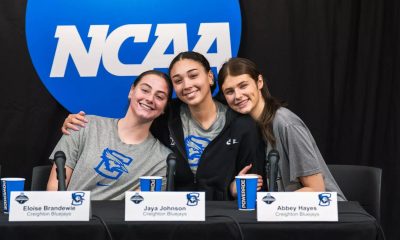
 Sports3 weeks ago
Sports3 weeks ago#11 Volleyball Practices, Then Meets Media Prior to #2 Kentucky Match
-
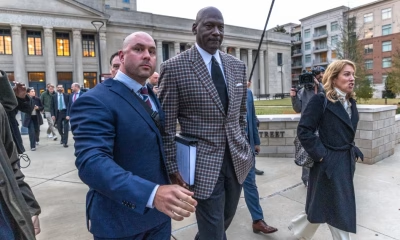
 Motorsports3 weeks ago
Motorsports3 weeks agoNascar legal saga ends as 23XI, Front Row secure settlement
-

 Motorsports3 weeks ago
Motorsports3 weeks agoSunoco to sponsor No. 8 Ganassi Honda IndyCar in multi-year deal
-
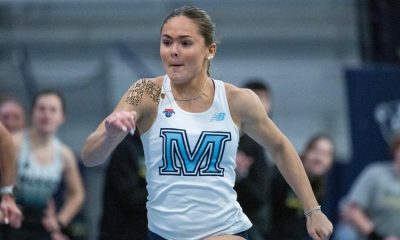
 Sports3 weeks ago
Sports3 weeks agoMaine wraps up Fall Semester with a win in Black Bear Invitational
-

 Motorsports2 weeks ago
Motorsports2 weeks agoRoss Brawn to receive Autosport Gold Medal Award at 2026 Autosport Awards, Honouring a Lifetime Shaping Modern F1
-
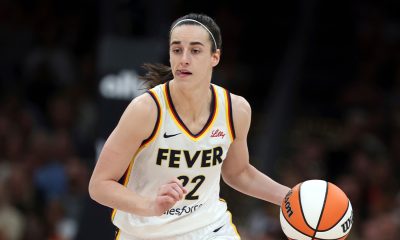
 Rec Sports3 weeks ago
Rec Sports3 weeks agoWNBA’s Caitlin Clark, Angel Reese and Paige Bueckers in NC, making debut for national team at USA camp at Duke
-

 Motorsports3 weeks ago
Motorsports3 weeks agoRick Hendrick comments after the NASCAR lawsuit settlement
-

 Rec Sports2 weeks ago
Rec Sports2 weeks agoStempien to seek opening for Branch County Circuit Court Judge | WTVB | 1590 AM · 95.5 FM
-

 NIL3 weeks ago
NIL3 weeks agoNike Signs 10 LSU Athletes to NIL deals
-
NIL3 weeks ago
Georgia football’s Dontrell Glover, Bo Walker arrested for shoplifting

































